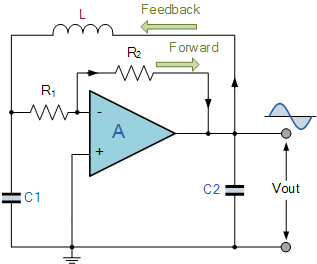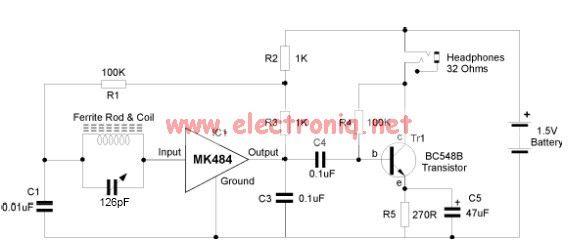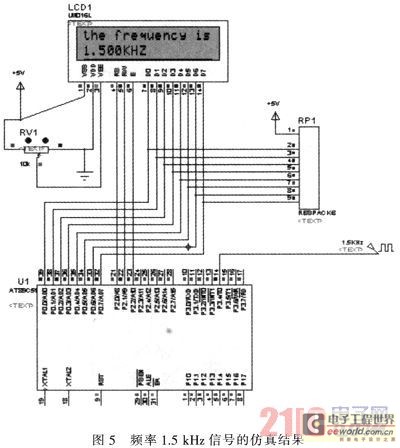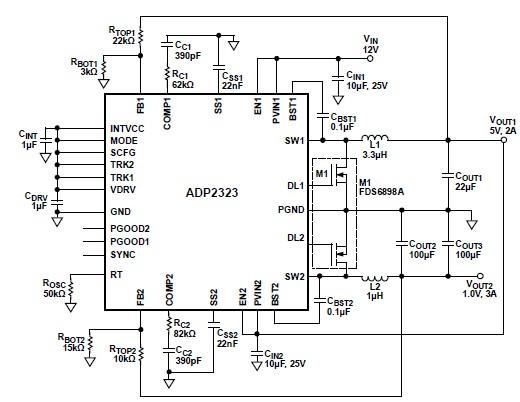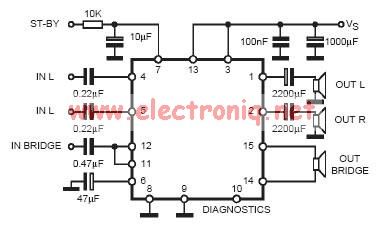
the design of the walkie cardiotachometer of MSP430
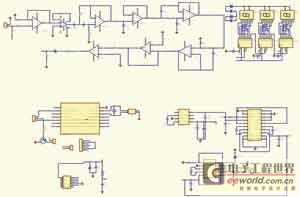
A walkie cardiotachometer has been designed to replace the traditional method of measuring heart rate using a pulse auscultator. This device is user-friendly and consists of three main components: signal collection, data processing, and an LED display along with an alarm circuit. The system converts the detected pulse signal from the sensor into a voltage signal, which is buffered by a voltage follower to isolate the preceding stage from the final stage, preventing mutual interference. The output signal is then sent through a high-pass filter after being pre-amplified to eliminate high-frequency noise, followed by a low-pass filter to further reduce interference. The processed signal is then amplified again to produce a clear, sharp signal, which is sent to a microcontroller for direct processing after comparator and diode rectification, ultimately driving the display and alarm circuits. The pulse sensor signal is input from the V end of the voltage follower, with feedback resistance set to establish an in-phase follower for buffering and isolation. The heart sound pulse amplifier increases the mV-level heart sound signal to a V-level for recording and display purposes. Due to the faintness of the heart sound pulse signal and the presence of significant noise, the circuit requires high input impedance and a common-mode rejection ratio greater than 80dB to minimize interference. Given the external signal interference in practical applications, the amplifier must be stable; thus, a two-stage voltage amplifier is utilized. The first stage employs a differential amplification circuit with negative feedback to enhance the common-mode signal rejection ratio, effectively minimizing noise intrusion into the final stage. The design incorporates the AD620 instrument amplifier, which is low-power and based on a dual operational amplifier circuit, as the pre-amplifier for the heart sound pulse signal. To avoid nonlinear distortion that could degrade the common-mode rejection ratio, the gain is limited to approximately 1000 times. The signal frequency range is low, between 0.78 Hz and 3.33 Hz, necessitating careful design of the circuit as an electric wave filter. Initially, a high-pass filter with a cutoff frequency of 0.5 Hz is used to eliminate hot electric interference from the sensor, followed by a low-pass filter to attenuate most of the remaining heart sound signal interference. Given the challenges of filtering such low signals, a smooth electric-wave filter design is adopted, specifically the second-order Butterworth filter for the high-pass section with a cutoff frequency of 5 Hz for the low-pass section.
The schematic diagram illustrates the low-pass filtering process. Following the initial amplification stage, the heart sound signal has not yet reached the desired operational value and still contains some interference, necessitating further amplification and filtering to achieve a clear reading. The entire design emphasizes the importance of signal integrity and noise reduction to ensure accurate heart rate measurement, making it suitable for a variety of medical and fitness applications. The integration of advanced filtering techniques and amplification strategies reflects a comprehensive approach to designing a reliable cardiotachometer.We have designed a walkie cardiotachometer, it can substitute and carry on the metric classic method with pulse auscultator, etc. , it is very convenient to use. This product mainly includes three parts: Collection, data processing and LED of the signal reveal and the alarm circuit.
As shown in Fig. 1, turn from the detected pulse signal of the sensor into the voltage signal and send the voltagefollower, play a role in buffering, make the preceding stage and final-stage isolate, avoid mutual interference. The signal outputted is sent into the high-pass filter after pre-amplifying, by the hot electric interference of the filtration sensor, and then undergo the high frequency interference in the filtration environment of the low-pass filter.
The signal finished dealing with is sent into the final-stage and continued amplifying in order to get the little and sharp signal of the interference, this signal is sent into the one-chip computer and dealt with directly after comparator and diode rectification, in order to drive display circuit and alarm circuit. The input signal of the voltagefollower, namely the pulse sensor signal inputs from V end, the zero setting of feedback resistance, form an in-phase follower, play a role in buffering, influence of grade before and after isolating.
The function of the pulse amplifier of heart sound is to enlarge the heart sound signal of mV grade to V grade, for revealing and record and use. Because the pulse signal of the heart sound is fainter, interfere with and the noise is larger, require the loss of reducing the signal that there is high input impedance in the circuits, there are high common-mode rejection ratios Greater than 80dB Barrage jamming and noise come.
Because of in real application, external interference of signal, stability to consider amplifier, the first class amplifier can`t realize such great gain to noise temperature ratio, so the voltage amplifier is generally made up of two-stage. Among them, the preceding stage adopts the differential amplifying circuit of negative feedback, in order to improve the rejection ratio of the common mode signal.
This partial key is how to inhibit various noises, avoid letting the noise scurry into the circuit of final-stage. So in the system, adopt the instrument amplifier AD620 of low power loss based on dual operational amplifier circuit as the pre-amplifier of pulse signal of heart sound.
In order to prevent producing the nonlinear distortion so that the common-mode rejection ratio of the damage circuit, this partial magnification should not be too high, it is about 1000 times to choose as. In this design, the signal frequency is lower, between 0. 78- 3. 33Hz, so the key designed as this circuit to the electric-wave filter. First of all, will pass the high-pass filter of one 0. 5Hz, in order to leach the hot electric interference of the sensor, then pass another low-pass filter to interfere with with the overwhelming majority of the filtration heart sound signal.
In realizing the circuit, it is already very difficult for the ordinary electric-wave filter to filter such a low signal, so adopt the gain to noise temperature ratio to change more smooth electric-wave filter of Bart`s fertile Sri Lankan in this design. Among them, the high pass is the electric-wave filter of second order Bart`s fertile Sri Lankan, it is the alpha cut frequency, for the fertile electric-wave filter then of Bart of 5Hz to be low-pass.
Fig. 3 is the schematic diagram of the low-pass filtering. The heart sound signal is after the preceding stage is amplified, the range has not reached the ideal using value yet, and there is certain interference, so need t 🔗 External reference
The schematic diagram illustrates the low-pass filtering process. Following the initial amplification stage, the heart sound signal has not yet reached the desired operational value and still contains some interference, necessitating further amplification and filtering to achieve a clear reading. The entire design emphasizes the importance of signal integrity and noise reduction to ensure accurate heart rate measurement, making it suitable for a variety of medical and fitness applications. The integration of advanced filtering techniques and amplification strategies reflects a comprehensive approach to designing a reliable cardiotachometer.We have designed a walkie cardiotachometer, it can substitute and carry on the metric classic method with pulse auscultator, etc. , it is very convenient to use. This product mainly includes three parts: Collection, data processing and LED of the signal reveal and the alarm circuit.
As shown in Fig. 1, turn from the detected pulse signal of the sensor into the voltage signal and send the voltagefollower, play a role in buffering, make the preceding stage and final-stage isolate, avoid mutual interference. The signal outputted is sent into the high-pass filter after pre-amplifying, by the hot electric interference of the filtration sensor, and then undergo the high frequency interference in the filtration environment of the low-pass filter.
The signal finished dealing with is sent into the final-stage and continued amplifying in order to get the little and sharp signal of the interference, this signal is sent into the one-chip computer and dealt with directly after comparator and diode rectification, in order to drive display circuit and alarm circuit. The input signal of the voltagefollower, namely the pulse sensor signal inputs from V end, the zero setting of feedback resistance, form an in-phase follower, play a role in buffering, influence of grade before and after isolating.
The function of the pulse amplifier of heart sound is to enlarge the heart sound signal of mV grade to V grade, for revealing and record and use. Because the pulse signal of the heart sound is fainter, interfere with and the noise is larger, require the loss of reducing the signal that there is high input impedance in the circuits, there are high common-mode rejection ratios Greater than 80dB Barrage jamming and noise come.
Because of in real application, external interference of signal, stability to consider amplifier, the first class amplifier can`t realize such great gain to noise temperature ratio, so the voltage amplifier is generally made up of two-stage. Among them, the preceding stage adopts the differential amplifying circuit of negative feedback, in order to improve the rejection ratio of the common mode signal.
This partial key is how to inhibit various noises, avoid letting the noise scurry into the circuit of final-stage. So in the system, adopt the instrument amplifier AD620 of low power loss based on dual operational amplifier circuit as the pre-amplifier of pulse signal of heart sound.
In order to prevent producing the nonlinear distortion so that the common-mode rejection ratio of the damage circuit, this partial magnification should not be too high, it is about 1000 times to choose as. In this design, the signal frequency is lower, between 0. 78- 3. 33Hz, so the key designed as this circuit to the electric-wave filter. First of all, will pass the high-pass filter of one 0. 5Hz, in order to leach the hot electric interference of the sensor, then pass another low-pass filter to interfere with with the overwhelming majority of the filtration heart sound signal.
In realizing the circuit, it is already very difficult for the ordinary electric-wave filter to filter such a low signal, so adopt the gain to noise temperature ratio to change more smooth electric-wave filter of Bart`s fertile Sri Lankan in this design. Among them, the high pass is the electric-wave filter of second order Bart`s fertile Sri Lankan, it is the alpha cut frequency, for the fertile electric-wave filter then of Bart of 5Hz to be low-pass.
Fig. 3 is the schematic diagram of the low-pass filtering. The heart sound signal is after the preceding stage is amplified, the range has not reached the ideal using value yet, and there is certain interference, so need t 🔗 External reference
Warning: include(partials/cookie-banner.php): Failed to open stream: Permission denied in /var/www/html/nextgr/view-circuit.php on line 713
Warning: include(): Failed opening 'partials/cookie-banner.php' for inclusion (include_path='.:/usr/share/php') in /var/www/html/nextgr/view-circuit.php on line 713
